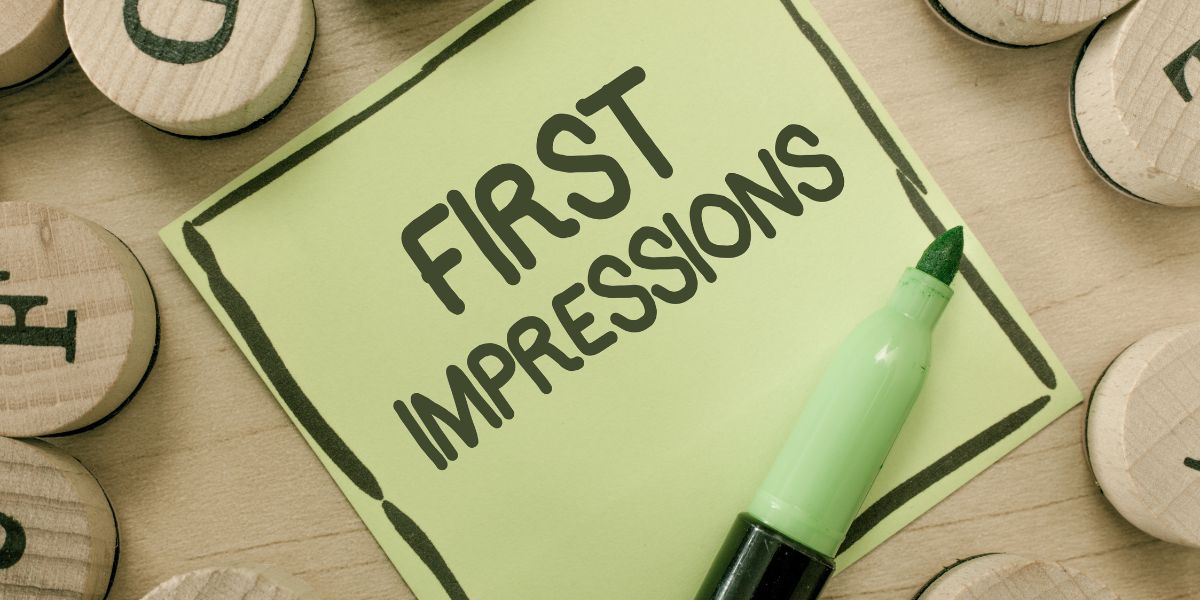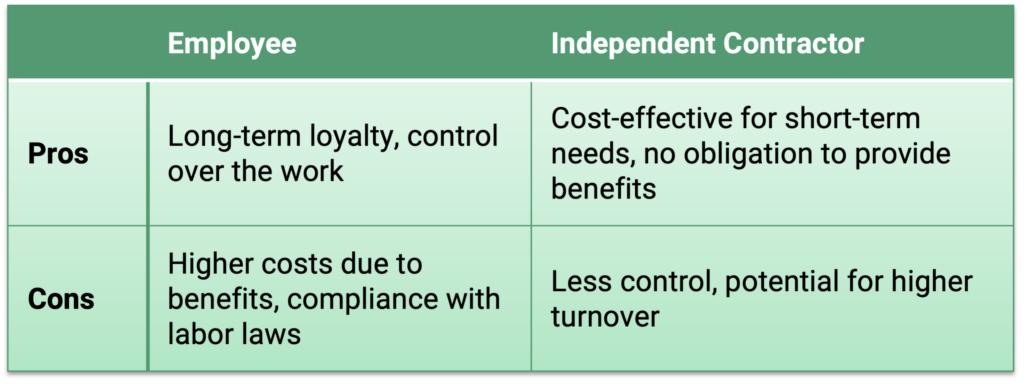Introduction
- Importance of making a good first impression.
- Situations where first professional impressions matter
Making a good first impression is crucial for freelancers and independent professionals because it sets the tone for your entire working relationship with clients – or sometimes whether you even have a relationship at all! In a competitive market, potential clients often make quick judgments based on their initial interactions with you, whether it’s through a pitch, an email, or an introductory meeting. A strong first impression can establish trust, demonstrate your professionalism, and differentiate you from others vying for the same opportunity. It’s not just about showcasing your skills but also about conveying reliability, confidence, and a genuine understanding of the client’s needs. This can significantly influence whether you land a project or lose out to competitors.
Whether you’re attending a job interview, meeting a potential client, or networking at an industry event, the initial impression you create can have a lasting impact. Situations where making a good first impression is crucial include job interviews, client presentations, networking events, and first-time meetings with colleagues or business partners. In these scenarios, your appearance, communication style, and overall demeanor are key factors in shaping how others perceive you, and ultimately, in influencing the success of your professional endeavors. In this blog post, we will walk through how to make a good first impression in 6 steps.
Understanding First Impressions
- Psychological basis of first impressions.
- How quickly first impressions are formed.
- Long-lasting impact of first impressions.
First impressions are formed quickly, often within the first few seconds of an encounter, based on visual and behavioral cues such as body language, attire, handshake, and tone of voice. These initial judgments are not only swift but also long-lasting, significantly influencing how colleagues, clients, and partners perceive and interact with you.
Understanding how to make a good first impression involves recognizing the psychological basis behind these judgments. The brain’s need to quickly evaluate and categorize new encounters drives us to form immediate opinions about others’ competence, reliability, and approachability. Once established, these impressions can be difficult to change, as people tend to seek information confirming their initial perceptions, a phenomenon known as confirmation bias. Therefore, mastering how to make a good first impression is essential for building strong professional relationships and ensuring ongoing success in your career.
Preparation is Key to Making a Good Impression
- Researching the context or person you will meet.
- Dressing appropriately for the occasion.
- Ensuring good hygiene and grooming.
- Punctuality
Making a good first impression starts with thorough preparation. Before any meeting or encounter with a customer, client, or employee, it’s essential to research the context of the person you will be meeting. Understanding their background, interests, and professional standing can provide valuable insights and help tailor your approach. Another critical aspect of how to make a good first impression is dressing appropriately for the occasion. Your attire should align with the industry standards and the specific environment you’re entering, as it speaks volumes about your professionalism and attention to detail.
Additionally, ensuring good hygiene and grooming is fundamental; it not only reflects personal care but also respect for those you are meeting. Arriving on time also demonstrates respect for others’ schedules and shows that you value their time. It reflects positively on your reliability and organizational skills, setting a tone of professionalism and commitment from the outset.
To ensure punctuality, consider implementing a few strategic practices. Plan ahead by reviewing your schedule and estimating the time needed to reach your destination, factoring in potential delays. Setting reminders and alarms can help keep you on track while preparing necessary materials or documents in advance reducing last-minute stress. By incorporating these strategies, you can consistently reinforce your positive first impression in any professional context.
Body Language and First Impressions
- Importance of body language in first impressions.
- Tips for positive body language: good posture, eye contact, and smiling.
- Avoiding negative body language: crossing arms, fidgeting.
Making a good first impression is closely linked to your body language and non-verbal cues. Body language plays a crucial role in shaping others’ perceptions of you, often speaking louder than words. To ensure a positive first impression, focus on key aspects of body language such as maintaining good posture, making consistent eye contact, and smiling warmly. These actions convey confidence, openness, and approachability, which are essential in professional interactions.
Conversely, being mindful of negative body language is equally important when considering how to make a good first impression. Avoid crossing your arms, fidgeting, or displaying nervous habits, as these behaviors can be perceived as defensive, disinterested, or anxious. By being aware of both positive and negative non-verbal cues, you can effectively manage the impressions you make and foster strong, professional relationships from the very first interaction.
Communication Skills
- Importance of clear and confident communication.
- Tips for active listening.
- Using positive and polite language.
As a professional, a good first impression is heavily influenced by your communication skills. Clear and confident communication is essential for conveying your ideas effectively and establishing credibility. Speaking with clarity ensures that your message is understood, while confidence in your delivery reinforces your authority and professionalism.
Additionally, making a good first impression involves practicing active listening. This means fully engaging with the speaker, making eye contact, nodding in understanding, and providing thoughtful responses. Active listening shows respect and interest, which can significantly enhance the quality of your interactions.
Finally, using positive and polite language is key to making a lasting, favorable impression. Whether you’re in a meeting, networking event, or casual conversation, choosing your words carefully and maintaining a respectful tone can leave a strong, positive impact on those you interact with. By honing these communication skills, you can ensure that your first impression is both impactful and enduring.
Showing Genuine Interest
- Asking thoughtful questions.
- Showing enthusiasm and engagement.
- Remembering and using names.
When meeting someone for the first time, showing genuine interest in the person you interact with helps create a lasting impression. One effective way to show this is by asking thoughtful questions that reflect your curiosity and engagement. You can inquire about their experiences, opinions, or challenges related to the topic at hand. This approach not only fosters meaningful conversations but also signals that you are actively listening and valuing their input.
Additionally, displaying enthusiasm and engagement during interactions contributes significantly to making a good first impression. Express genuine interest in the discussion and convey your eagerness to contribute or collaborate. Your positive energy can be contagious and helps build rapport.
Another key element is remembering and using names. Addressing individuals by their name during conversations creates a personal connection and shows that you have made an effort to remember and acknowledge them.
Confidence and Authenticity
- Balancing confidence with humility.
- Being genuine and authentic in interactions.
- Avoiding overconfidence and arrogance.
Good first impressions are intricately linked to the balance of confidence and authenticity. Displaying confidence in your abilities and opinions is essential, as it communicates competence and self-assurance. At the same time, it’s vital to avoid overconfidence, which can quickly be perceived as arrogance. Overconfidence can alienate others and undermine the positive impact you’re trying to create. It’s equally important to balance this confidence with humility. A humble approach ensures that your confidence is well-received, showing that you are open to others’ ideas and willing to collaborate.
Being genuine and authentic in your interactions is another crucial aspect of first impressions. People are more likely to trust and connect with you when you are true to yourself and transparent in your communication. Authenticity fosters deeper connections and long-term professional relationships.
By striking the right balance between confidence, humility, and authenticity, you can ensure that your first impression is both powerful and lasting in any professional environment.
Following Up: Final First Impression
- Importance of follow-up after the first meeting.
- Sending a thank-you note or message.
- Maintaining the connection.
Beyond the initial encounter is the crucial step of following up. The importance of a follow-up after the first meeting cannot be overstated, as it reinforces the connection you’ve made and demonstrates your professionalism and commitment. A thoughtful follow-up shows that you value the interaction and are interested in continuing the relationship.
Sending a thank-you note or message is an effective way to follow up. It not only expresses your appreciation but also leaves a lasting positive impression. Whether it’s a brief email or a handwritten note, this gesture can set you apart and help solidify the connection.
Maintaining the connection is the final key. Regularly reaching out, whether to share relevant information, check in on ongoing projects, or to simply stay in touch, helps keep the relationship warm and positions you as someone who values ongoing collaboration and engagement. By prioritizing follow-ups, you ensure that your first impression evolves into a lasting professional relationship.
Conclusion
In conclusion, understanding how to make a good first impression in a professional setting involves mastering several key elements. From effective communication and confident body language to thorough preparation and thoughtful follow-ups, each aspect plays a crucial role in shaping how others perceive you. When you make a good first impression, it sets the foundation for successful relationships and opportunities in your career.
It’s important to continually practice and refine these skills, as first impressions can have a lasting impact on your professional journey. By being mindful of how you present yourself and interact with others, you can consistently create positive and memorable first impressions that open doors,build lasting connections and result in professional success.



